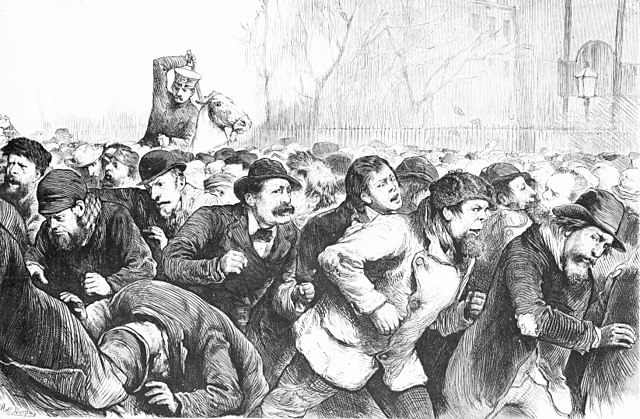The Long Depression was a worldwide price and economic recession, beginning in 1873 and running either through March 1879, or 1896, depending on the metrics used. It was most severe in Europe and the United States, which had been experiencing strong economic growth fueled by the Second Industrial Revolution in the decade following the American Civil War. The episode was labeled the "Great Depression" at the time, and it held that designation until the Great Depression of the 1930s. Though it marked a period of general deflation and a general contraction, it did not have the severe economic retrogression of the Great Depression.
Run on the Fourth National Bank, No. 20 Nassau Street, New York City, 1873. From Frank Leslie's Illustrated Newspaper, October 4, 1873.
The Panic of 1873 was a financial crisis that triggered an economic depression in Europe and North America that lasted from 1873 to 1877 or 1879 in France and in Britain. In Britain, the Panic started two decades of stagnation known as the "Long Depression" that weakened the country's economic leadership. In the United States, the Panic was known as the "Great Depression" until the events of 1929 and the early 1930s set a new standard.
A bank run on the Fourth National Bank No. 20 Nassau Street, New York City, from Frank Leslie's Illustrated Newspaper, 4 October 1873
Black Friday, 9 May 1873, Vienna Stock Exchange
New York police violently attacking unemployed workers in Tompkins Square Park, 1874



